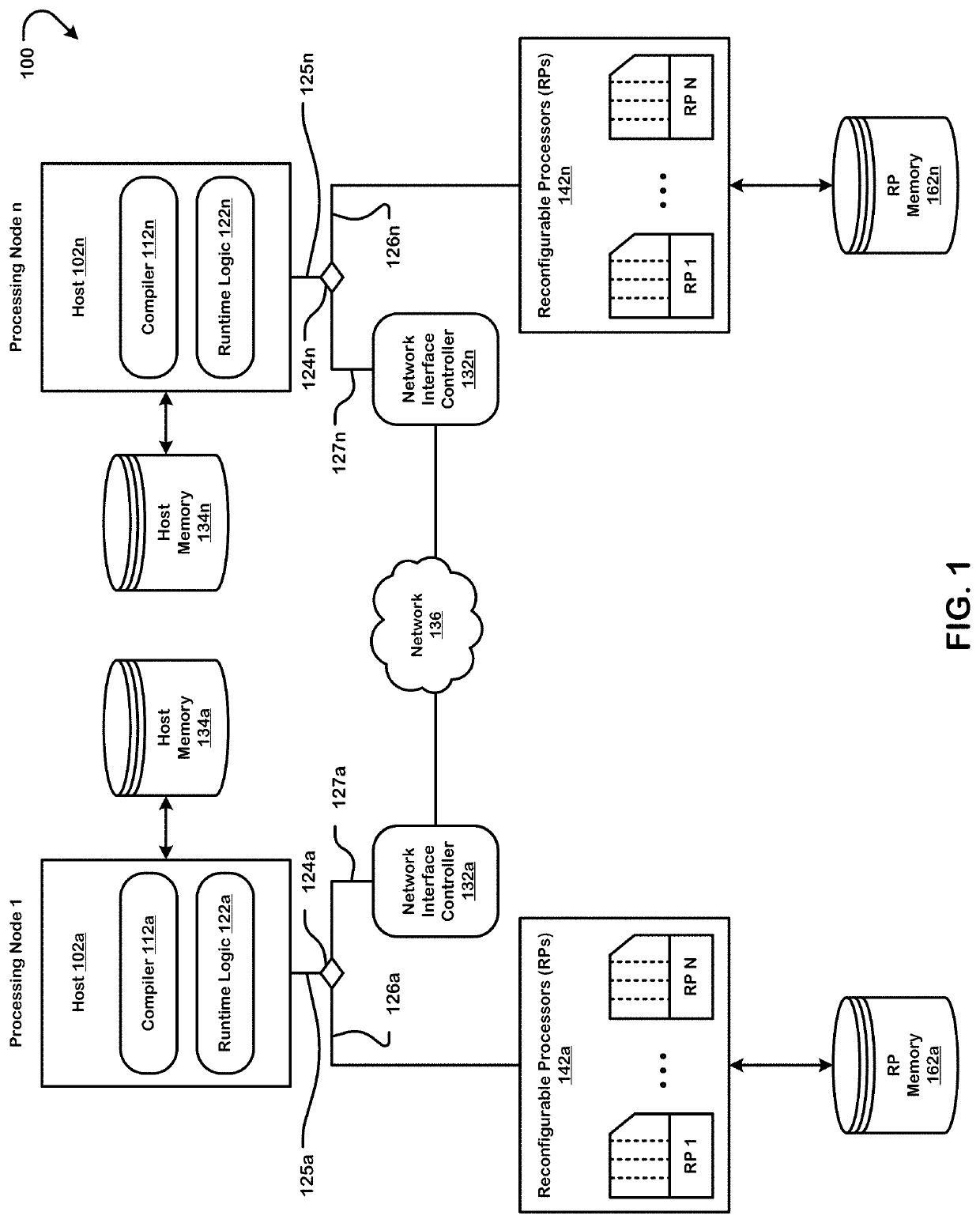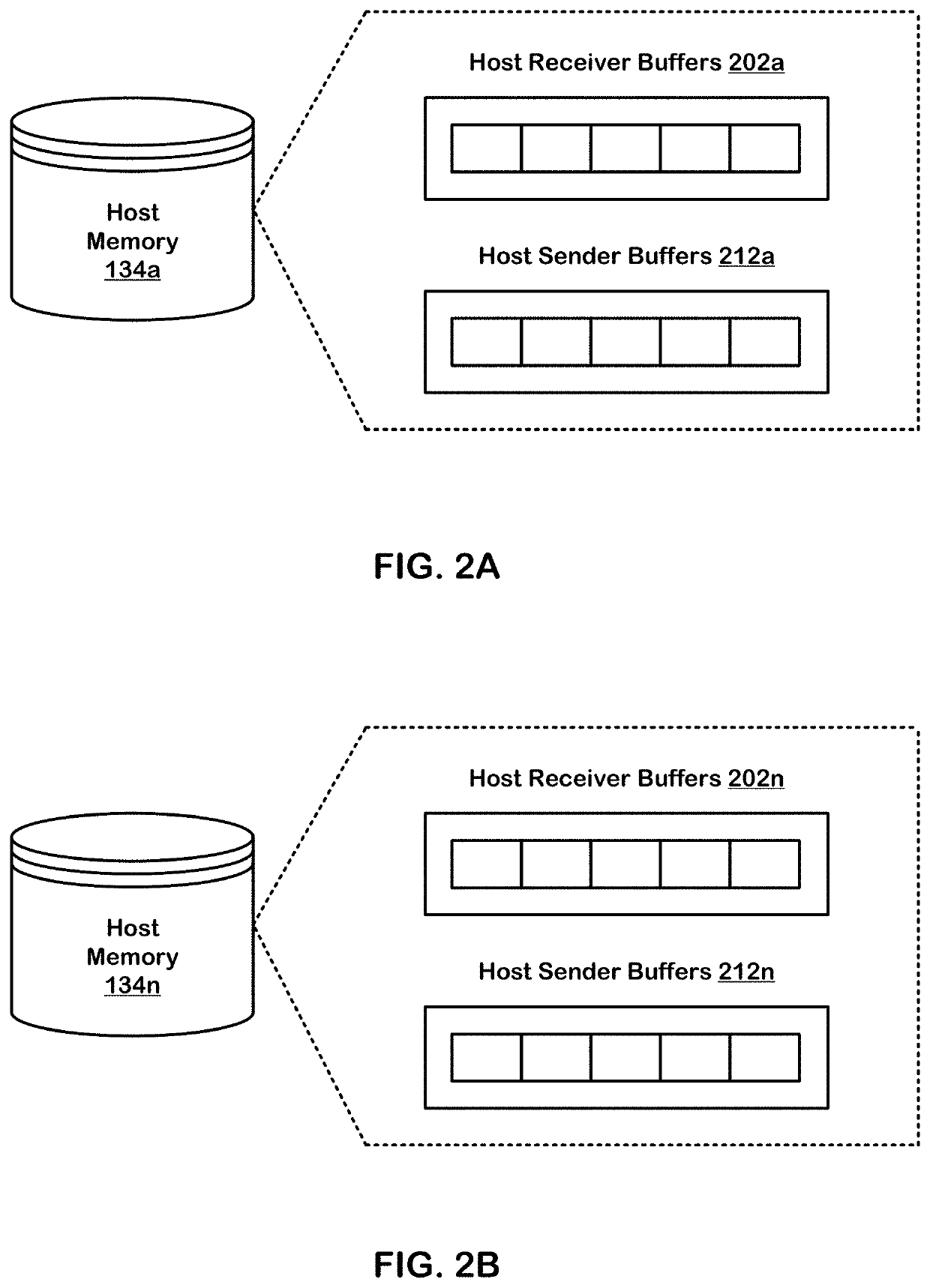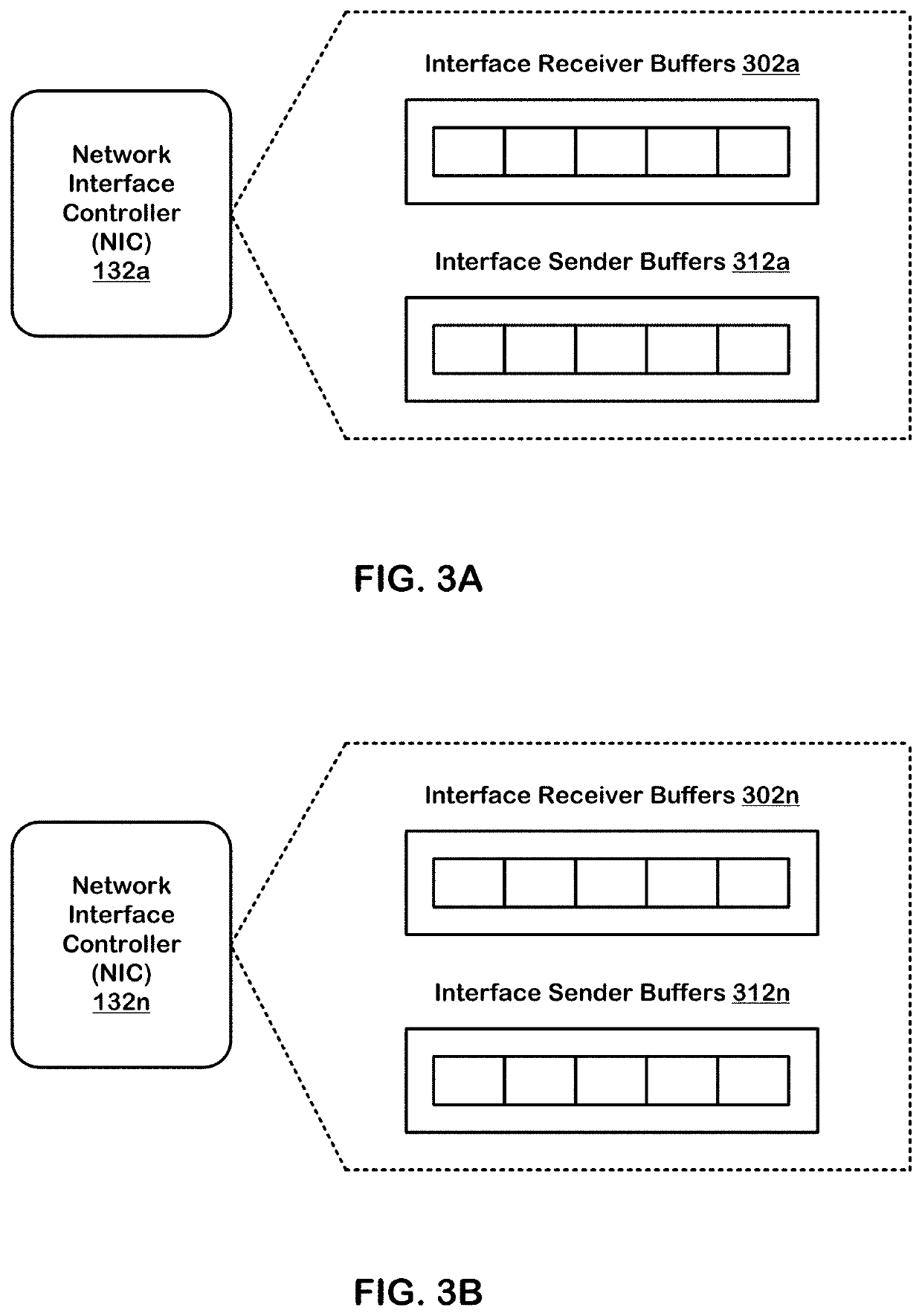Dataflow all-reduce for reconfigurable processor systems
a processor system and data flow technology, applied in biological models, multi-programming arrangements, instruments, etc., can solve the problems of network training still taking an impractical long time on a single machine, computationally extremely demanding training these neural network models, and high repetition ra
- Summary
- Abstract
- Description
- Claims
- Application Information
AI Technical Summary
Benefits of technology
Problems solved by technology
Method used
Image
Examples
example use
of FPGA Offload—Multi-Node System
[0378]FIG. 42 illustrates an example data center 4210 incorporating multiple processing nodes 3201 each as described above with respect to FIG. 32. Four processing nodes are shown, numbered 0-3. As set forth above with respect to FIG. 32, each processing node 3201 includes a respective host 3210 and eight (for example) RPs 3212 numbered RP0 through RP7, all interconnected by way of a respective PCIe bus 3220. RPs and other units within a single processing node are sometimes referred to herein as “local” to each other, whereas units that are in different processing nodes are sometimes referred to herein as “foreign” to each other.
[0379]The hosts are given subscripts in FIG. 42 corresponding to the node number to which they belong (e.g. Host0, Host1, Host2 and Host3). Each processing node 3201 also includes a respective SmartNIC 4222, which has one port 4224 connected to the local PCIe bus 3220 in the respective processing node, and a second port 4226 ...
PUM
 Login to View More
Login to View More Abstract
Description
Claims
Application Information
 Login to View More
Login to View More - R&D
- Intellectual Property
- Life Sciences
- Materials
- Tech Scout
- Unparalleled Data Quality
- Higher Quality Content
- 60% Fewer Hallucinations
Browse by: Latest US Patents, China's latest patents, Technical Efficacy Thesaurus, Application Domain, Technology Topic, Popular Technical Reports.
© 2025 PatSnap. All rights reserved.Legal|Privacy policy|Modern Slavery Act Transparency Statement|Sitemap|About US| Contact US: help@patsnap.com



